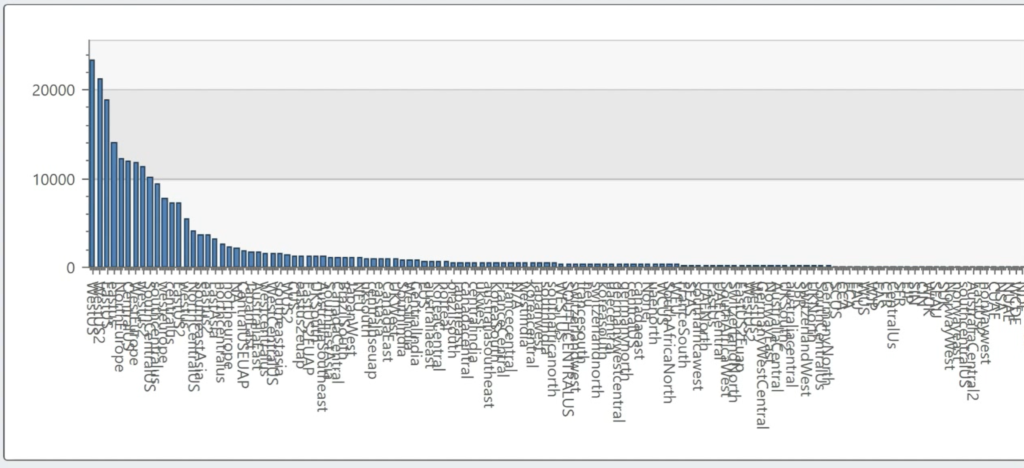I’m Mike O’Neill and I’m a data nerd who uses Azure Data Explorer, or Kusto, every day to glean insights into Azure’s developer and code-to-customers operations.
A data engineering lead I work with recently asked me what his team should do to deliver high quality data. I’ve lucky enough to spend most of my career in organizations with a data-driven culture, so it’s the first time I’ve been in a position to teach rather than learn.
And so I didn’t have an easy answer. Data quality isn’t something I’ve classified in any way, it’s just something I’ve learned how to do through trial and many, many, many errors. I discussed it with my boss and she tossed down the metaphorical gauntlet: “Michael, list out the different data quality tests you think are necessary.”
My first reaction was that the most important thing for exceptional data quality is to have as many people look at the data as possible. It’s a bit of a dodge, I’ll admit. Linus’ Law really does apply here: “given enough eyeballs, all bugs are shallow.” But there are never enough eyeballs.
So here goes. There are a lot of things to look for, and I’ll create a video for each one. If you’ve been in the data engineering space for a while, you should probably skip this series.
Identifying potential dimensions is one of my top tasks, and for this video, I’m just looking at simple dimensions with a handful of values, maybe a few hundred at the extreme. I’m not looking at complex dimensions such as product catalogs which could have tens of thousands of values.
All I do is examine every column that might be a dimension of some sort. Generally, I ignore datetimes and real numbers, but short strings and bytes are good candidates. Then I aggregate, getting a count of rows for each potential value.
At this point, it becomes art rather than science, but a histogram can help push the scales a bit more into science.
Take a look at this histogram: we’re looking at how different teams at Microsoft name Azure’s data center regions. I get 168 values from this query, but I know that Azure has 56 regions. Different service teams are naming the regions differently.

Now look at the shape of that data: while I have a long tail of values, the bulk of my data looks like it falls within a small set. In fact, just 23 of 168 account for 80% of the values. To me, that feels like a decent candidate for a dimension.
In contrast, look at deployment actions—these values represent all the complexity of delivering new features to Azure. And I’m not using the word complexity lightly. There are over 9,000 different actions here. I can’t even generate a histogram in Kusto: it’s got a max of 5,000 values.
Excel doesn’t have that 5k limitation, but… even then, you can’t even see the histogram there: the long tail of values is so long, it’s basically meaningless. This is not a good candidate for a simple dimension.
Of course, this is art, not science. Azure Regions feels like a good candidate for a simple dimension, but deployment actions doesn’t.
Still, with 168 values for 56 regions, I also have to make a call about how to handle that. Short-term, it’s easy to manually go through the list and normalize those values down to 56 regions. For example, japaneast, jpe and eastjp are clearly all the same thing. That solves my problem in the short-term, but what do I do if a team decides to add a new value such as ejp or japane?
Again, we come to art. I really only have two choices about how to handle this long term. My first option is to create a job that monitors values in this dimension and alerts me whenever a new value appears so I can normalize it. My second option is to go to the team that owns this tool and insist that their users not have the choice to enter in whatever value they want.
The second option, in this particular case, is the right choice. As of March 2020, we have 56 data centers, and there’s no legitimate reason for one service team to have a different set of characters to represent the japan east region than all the other Azure service teams.
To put it another way, there’s a moral hazard here. If I go about cleansing that data once, the team owning that telemetry won’t have to. And I’ll keep having to cleaning it again and again and again.
But that’s not always the right answer. There’s not always a moral hazard.
Setting up an alert to manually handle the new value may be the right choice. For example, I was once responsible for providing data to Surface marketers. And every year, two or three months before Black Friday, I saw a brand-new Surface model name pop up in Windows telemetry. Now, I wasn’t supposed to know about that new device until October, but I considered my job to make sure that the data engineers, analysts, marketers and data scientists that used the data my team produced didn’t know about those new Surface models via the data my team produced.
We made the investment to monitor for new Surface model names, and when we found them, not only did we alert the people who were in the know, but we made sure those new model names didn’t appear in our data until it was time to execute marketing campaigns promoting them.



